Data, Analytics, and Insight: What’s The Difference?

Data, analytics, and insight is kinda our thing. However, it seems like a lot of people use those words almost interchangeably. Are they the same thing? What do they mean for your business?
Data = The Information
Analytics = The Connections
Insights = The Actions
Data is pure information. For example, data about your current customers (first party data) is information such as average age, gender, location, or occupation. Analytics are the patterns that connect those things.
That would mean that data is knowing that you sent over 20,000 emails in June 2021. Analytics are knowing that your average open rate is 22.8% and your click through rate is 0.09%. The analytics show you a clearer image of the data.

I heard a really great illustration about this recently. Thinking about data and analytics can be compared to looking at an impression painting (like this one: The Cliff of Aval Etretat by Claude Monet.) Up close, all you see are the brush strokes and colors. That’s like looking at raw data. You can see what it is made off. But if you back up a few feet and look at the painting, you can see what the image actually is. Similarly, looking at analytics gives a more complete view of your data.
What’s the advantage of Insight?

Insight is the action connected to the analytics. Taking the example of 20,000 emails, insight would taking the knowledge that you have a great open rate but a terrible CTR and doing something about it. Applying insight means changing your call to actions or link to generate a better click through rate.
What’s another way to apply insights?
Building a Buyer Persona
What is a buyer persona? In the simplest terms, a buyer persona is exemplification of all of your customers. The most common way to do this is to create a fictional person that has the most common demographics and interests of your customers. Basically, you take data, analyize it, and then use insight to act.
Ask yourself: What are your customers common denominators? (Data) What do they want? (Analytics) What are their pain points? (Analytics) Once you have this information, it can be combined into a person you can picture makes it easier to connect with the crowd. (Insights)
Jim Edwards from Funnel Scripts explains buyer personas as the main character in the story of your company’s customer journey. Although your company already has its own personality, (or brand) in order to success the narrative you’re telling haws to focus on what the customer wants and needs. You are there to help them get to where they want to go. Jim Edwards example buyer persona was for a weight loss company. Their buyer persona is a middle-aged unicorn named Fred who needs to lose weight if he wants to be successful at his quests. Fred is the main character in the story. The weight-loss company is there to help him.
What data do you need to create a buyer persona?
Like any good main character, your buyer persona needs to be well rounded. It needs to have a purpose, interests, goals, and struggles. It’s especially important to know what motivates them so you can help them.
Here’s some common buyer persona attributes.
- What are their basic demographics?
What gender to they identify as? How old are they? Where do they live? What is their relationship status? Are they educated? - What do they do for work?
What’s their job title and description? But more than that, are they a decision maker? What do they influence at work? - What are their interests?
Do they have hobbies or interests? What do they do in their free time? Are they part of a community? - What do they want and why can’t they have?
This a big thing for figuring out what you can do to help them! What are their goals and dreams? What are their pain points? Like, what keeps them up at night? - Why wouldn’t they buy from you?
What’s stopping them from buying from you? What objections may they have? - What ways would they prefer to interact with you?
Do they use social media? Do like a particular social media? Is a phone call the best way to reach them?
Using data, analytics, and insight is essential to having a successful business. What ways to you implement data in your business?
How A Lookalike Report Helps You Increase Sales
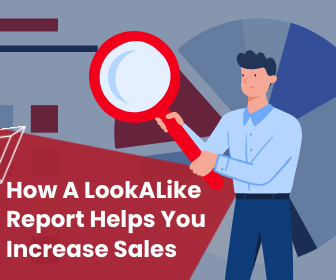
LookALike audiences have been a go-to targeting tool for almost a decade. Even before digital marketing, marketers used current audience demographics to target potential customers. With a growing number of AI tools available, businesses of all sizes have access to LookALike targeting. How can you use a LookALike Report to increase sales?
What is a LookALike Report?
Pioneered by Facebook in 2013, a LookALike report uses common attributes and demographics of your current audience to find more customers who “look like” them. These attributes can be anything from age and location to interests and hobbies. The more commonalities between your audience the more accurate your LookALike report will be.
Although originally only a tool on social media, LookALike reports are now available on many different types of platforms. For example, we often build LookALike reports with raw CRM data.
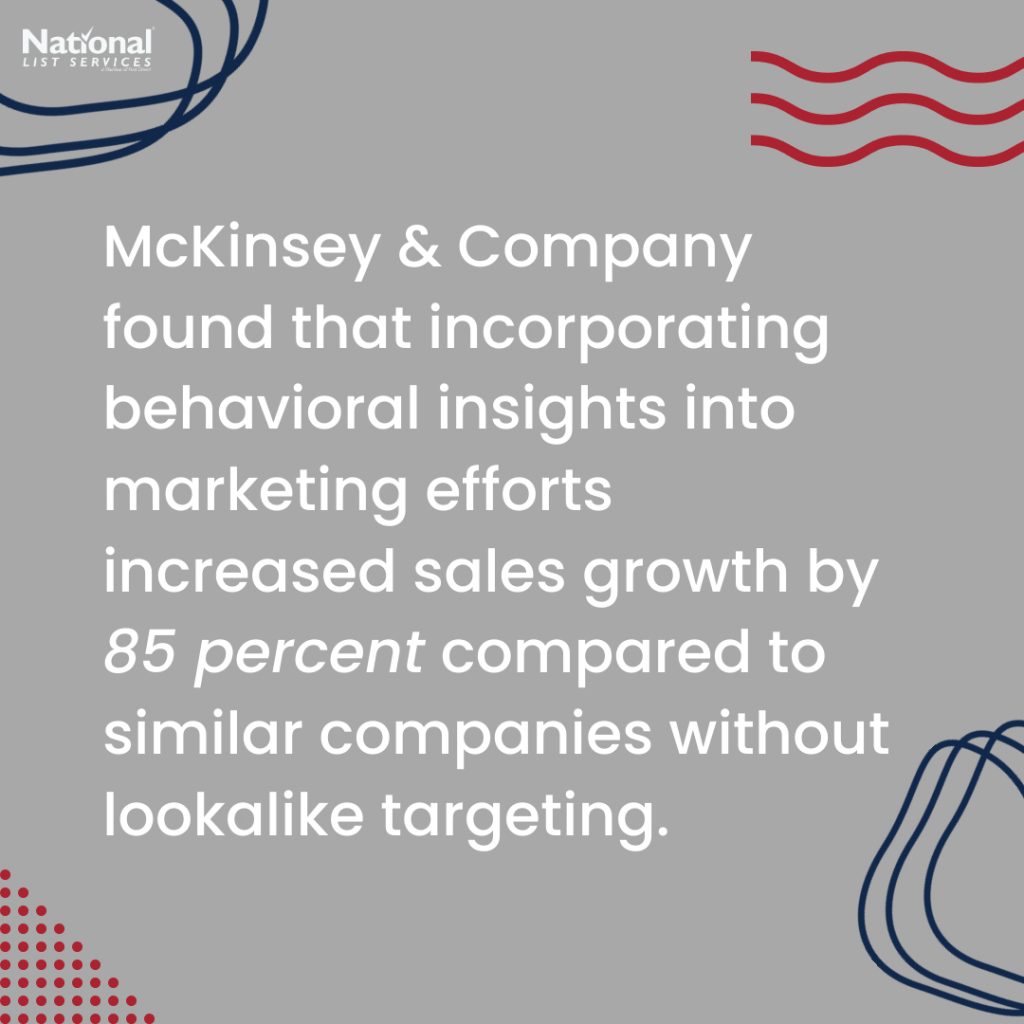
How to Maximize Your Report to Increase Sales
As great as it would be to dump all your current audience information into a LookALike report and get back a list of new customers, it usually takes a more finesse than that. Here’s 5 tips and tricks to take out some of the guess work.
#1 Define Your Audience
The goals of LookALike reports can be different so it’s important to start with the right data seeds or source audience. Since LookALike reports are based on the data you input, it really important that the data you start out with is accurate and will accomplish what you want. For example, do you want to find new customers that are like all your customers or like your best current customers?
The amount of data you can use to start with varies greatly. Facebook recommends anywhere between 1,000 and 50,000 people. Although they do say that starting with “a larger audience increases your potential reach but reduces the level of similarity between the Lookalike Audience and source audience.” Those differences between your source data and LookALike audience could be the difference between a sale or not.
Where can you get source data? Here’s three different source audiences:

- CRM Data
Seeds defined by existing CRM data match lookalike audiences with information gathered from existing customers, such as email, physical addresses, and phone numbers. However, this data is usually too broad and needs to be narrowed down to create an accurate base for a LookALike report.
- Social Media Engagement Data
Data from social media audience can also be used as a seed that a LookALike report is based on. This data is usually based on characteristics like page views and likes.
- Conversion Data
Source data based on conversion data are usually your “best customer” seeds. These are customers who have already competed and action with your business.
#2 Get Used to Segmenting Your Data
Building out your LookALike report will be a lot easier when you have a specific product or audience segment in mind. Knowing what you want to use this new audience data for will help you pick the right demographics to target. This is where audience segmenting comes in. Finding the right demographics will be easier if you already have your audience data organized or tagged by demographics.

#3 Connect Your LookALike Goals to Your Marketing Goals
Targeting using a LookALike audience can give you a higher ROI and help you reach your marketing targets. For example, if your company has found that you get higher engagements on mobile devices, you can build a LookALike report from those people. By targeting those people, you can direct your marketing efforts towards the audience most likely to help you reach your goals.
#4 Target and Retarget and Retarget
Targeting the right audience is effective, retargeting adds even more. Using a LookALike audience in a retargeting campaign adds to specific information gathered in the initial campaign. And since retargeting uses a lot of the same principles as building a LookALike audience, they go hand in hand.
#5 Switch Up Your Platforms
Facebook isn’t the only platform that supports LookALike reports. Many online platforms have LookALike audience builders built in. Switch up your platform to test new audiences and ways of reaching them. And as we mentioned earlier, we often use raw CRM data to build a LookALike report within our list system. The data we get from those reports can be used for any type of marketing.
Have you ever used a LookALike Report?
The Apple Update and Data Privacy

Apple is rolling out an update this week that finally does what they’ve been threatening to do for a lonnnggggg time. Control over the ADFA (Apple’s Device Identifier for Advertisers) and other app tracking tools designed for marketing are being given directly to the users. What Apple decides to do when it comes to privacy and marketing tools greatly impacts the entire industry. Why? For one thing, 45.2% of smartphones users in the United States have an iPhone. Another reason is that they have marketed themselves as the company that is going to stand up for its user’s privacy and control, even if that means going against Facebook. Or the Government.
The big question is though… what does it mean for you? As a user and as an advertiser?
What are they actually doing?
With the new update scheduled to go out this week, Apple is introducing a feature called “App Tracking Transparency.” What does it do? Well… it makes advertiser tracking between apps more transparent to users. Apple has made the ability to see (and change) what apps are tracking what for years, the difference now is that instead it being buried deep in settings, a pop-up window will show up on every app that tracks something or collects any data. This pop up (like the one for sharing location) will allow users to control what personal data each app has access to as well what other apps it can connect to.
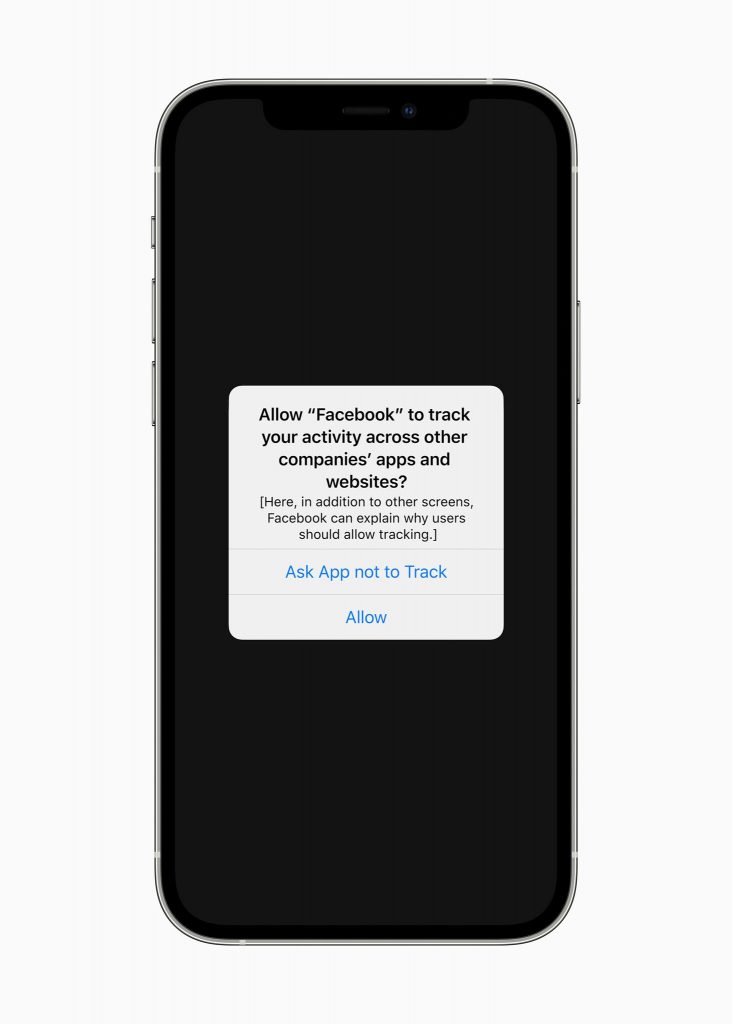
What information are apps collecting/what are they collecting? Apps (and websites) can collect a surprising amount of information that users haven’t directly given them. Some apps track your physical location. They can use this information to serve you targeted ads based on where you are in the physical world. Knowing your physical location can also give you better recommendations on things “near you,” whether that be pizza for lunch or the weather forecast.
Apps also can have tracking pixels built in. These pixels can track your movement form one app or website to another. This is how you can get an ad for something you just looked at on Amazon. Amazon has a tracking pixel built into their website, they in turn take the information the pixel has collected about visitors to target them on other websites and apps.
What choice do users have now?
In the popup window, users will now be given the choice: “Allow” and “Ask app not to track.” In the past Apple has let you decide which specific elements you would allow, like only location sharing or only ADFA tracking. However, this feature appears to be all or nothing. If you “Allow” then you are giving complete access.
What happens when you say no to tracking? Apple stops giving the app access to your ADFA, stopping it from learning about you from other apps. It also tells apps that you really would rather they didn’t track or share your information in any other ways.
Why should you allow tracking?
Personalized ads are one part of the puzzle when it comes to be tracked online. As we’ve talked about in the past, personalized ads are very effective. Younger generation that have grown up online don’t tolerate non-personalized ads very well. We are constantly inundated with content and advertising, so it is easy to completely zone out advertising (in any form) that is something you are not directly interested in. Also, many consumers now have in innate understanding of how their personal data is used to create targeted ads. Being targeted (or retargeted) based on their interests and past activities are expected. Recently surveyed consumers between the ages of 18-34, 58% said that a personalized ad helped them make a purchase decision. 42% also said that they had clicked on a sponsored ad in the last 6 months!
For a lot of us, the privacy concerns pale in comparison to function and usability of an app. A TapResearch poll conducted in August 2020 shows that 23% of iOS users are likely to opt in to sharing data with apps that request it. Another 21% of consumers are neutral on the subject, suggesting they will not opt out. Recent eMarketer research shows that 75% of consumers are willing to share their location if it enables a mobile service or saves them money. Which highlights how many users feel about personalized advertising: getting a coupon or an ad for something you were probably going to buy anyway is not a bad thing.
The Facebook Controversy
Facebook has been by far the most outspoken opponent of AppTrackingTransparency, going so far as to take-out full-page ads in newspapers and other print publications. Facebook says that AppTrackingTransparency will hurt small businesses’ ability to advertise to those in their community and Apple shouldn’t be able to make “unilateral decisions without consulting the industry about a policy that will have far-reaching harm on businesses of all sizes.”
Apple shouldn’t make “unilateral decisions without consulting the industry about a policy that will have far-reaching harm on businesses of all sizes.”
Facebook
In general, the consensus seems to be that Facebook is upset because of their ongoing rivalry with Apple and more importantly, this decision’s impact on their own revenue. In the months since its announcement Facebook has changed its tune a bit. Zuckerberg said in an interview in March on Clubhouse that Apple’s new privacy policy may actually help Facebook; if advertisers can’t find space across iOS apps they may turn to Facebook.
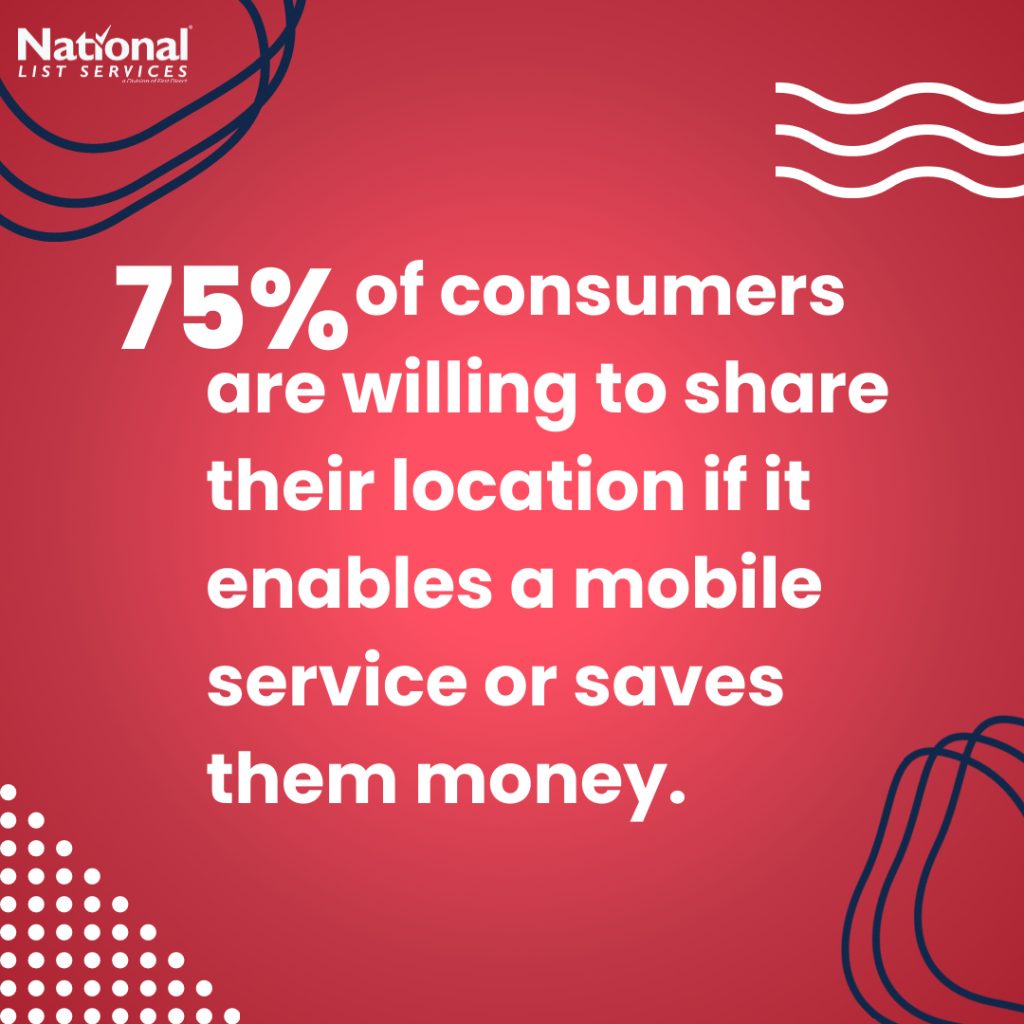
Time will tell if these changes pull advertisers more into Facebook marketing, but one thing is for sure, they have already impacted Facebooks. We were sent this by Facebook this week: “Apple released changes with iOS 14 that impacts how we receive and process events from tools like the Facebook SDK and the Facebook pixel. See updates on how these changes affect your ad account and see tasks that can help you reach your audience.” So far, the only thing we’ve seen impacted on Facebook is size audiences available. That is expected to level out though, in coming months as people re-opt-in to app tracking.
What are advertisers doing about it?
Many apps already have another type of pixel technology built into them called “Fingerprinting.” Fingerprinting has been developed recently to combat this end of cookie era. Fingerprinting works by collecting seemingly unimportant data from your device such as screen resolution, phone model, and current operating system, and combining it into a way of recognizing your unique device. Much like actual finger printing, fingerprints match to fingerprint, not a name, address, phone number etc. This allows advertisers to target you with ads without knowing who you actually are, thus getting around any data privacy issues.
There are many tools becoming available that do similar things. Tools like Household Level Identifiers that don’t target specific people. Apple hasgiven advertisers time to come up with solutions, many of which probably haven’t been released yet!
So, what do you think? Do the advantages of AppTracking outweigh the privacy costs? Are you going to allow AppTracking?
The Data You Need to Market To Those Under 25
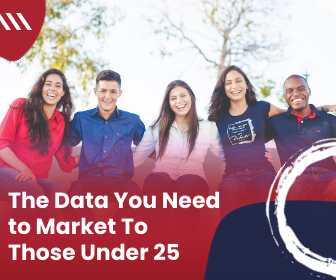
Do you ever read a statistic that just messes with your head? For example, I recently read that by 2022, 41% of the world’s population will be under 25. Which is crazy!! And creates an interesting marketing challenge. How can you effectively market to a generation who has grown up online and is constantly inundated with content and advertising?
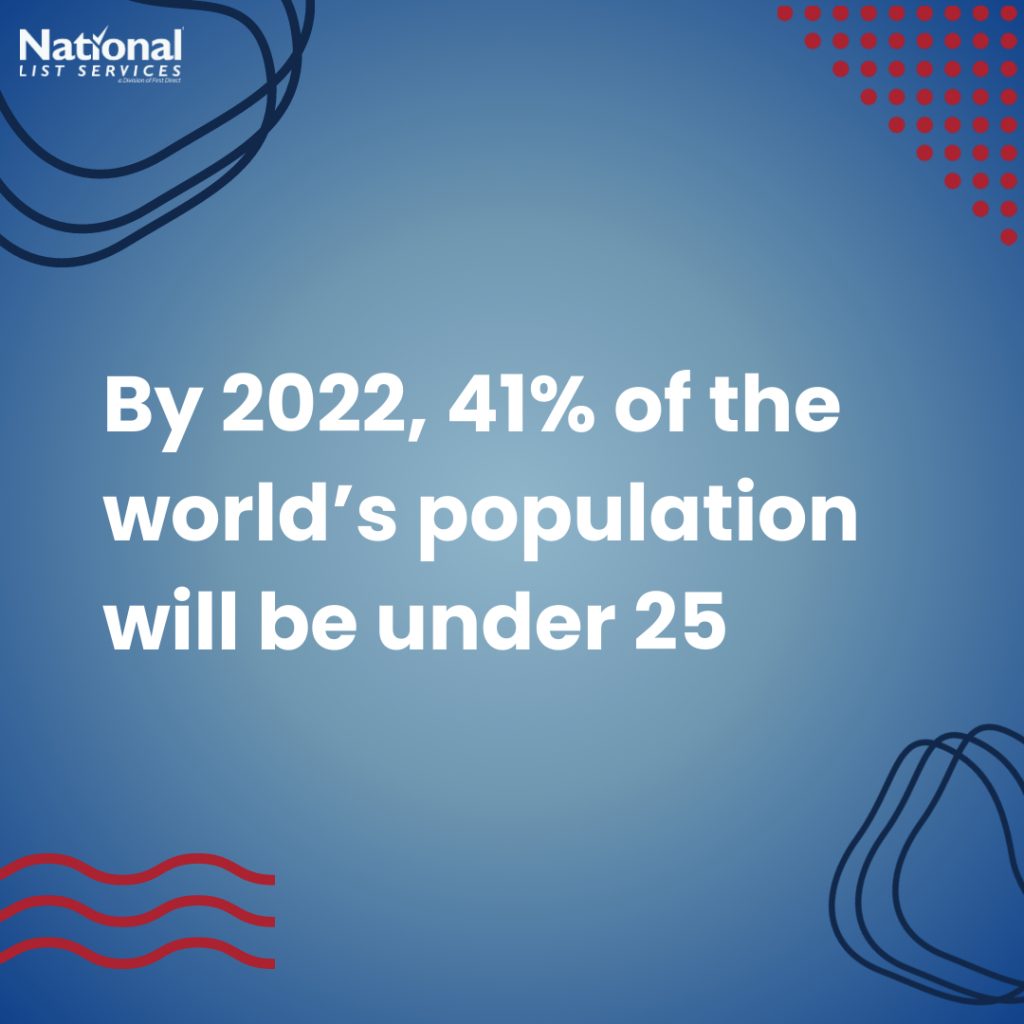
People under 25 not only take up a large share of the world’s population but they also make up a disproportionate amount of online and social media users. However, those of us in this age group statistically have shorter attention spans and tend to make decisive decisions about whether or not to consumer content or ads. A study in 2019 found that 64% of 18-24 tune out content from cluttered environments. Leading to 46% of advertisers saying that they have issues getting their content to stand out! Also, a third of advertisers say that it’s a challenge to find effective ad placement sin all the online clutter. What can you do to cut through all the online noise and reach this massive market?
#1 – Find Shared Passions
The sheer amount of product, companies, and information available is staggering. It is not enough anymore to have a good product available anymore, your brand ideals and personality need to match with the personality of your consumers. 56% of Gen Z consumers say that having shared passions and perspectives is a major factor when it comes to their engagement with a brand. However, Gen Z’ers are fantastic at sniffing out inauthenticity. Your brand personality and ideals need to actually be what you say they are. Actions speak louder than words!
What are the advantages of having a well-defined brand personality and ideals? Giving your company a personality makes things like content creation a lot easier. Knowing who you are also can help you make decisions about the direction you want to go in the future.
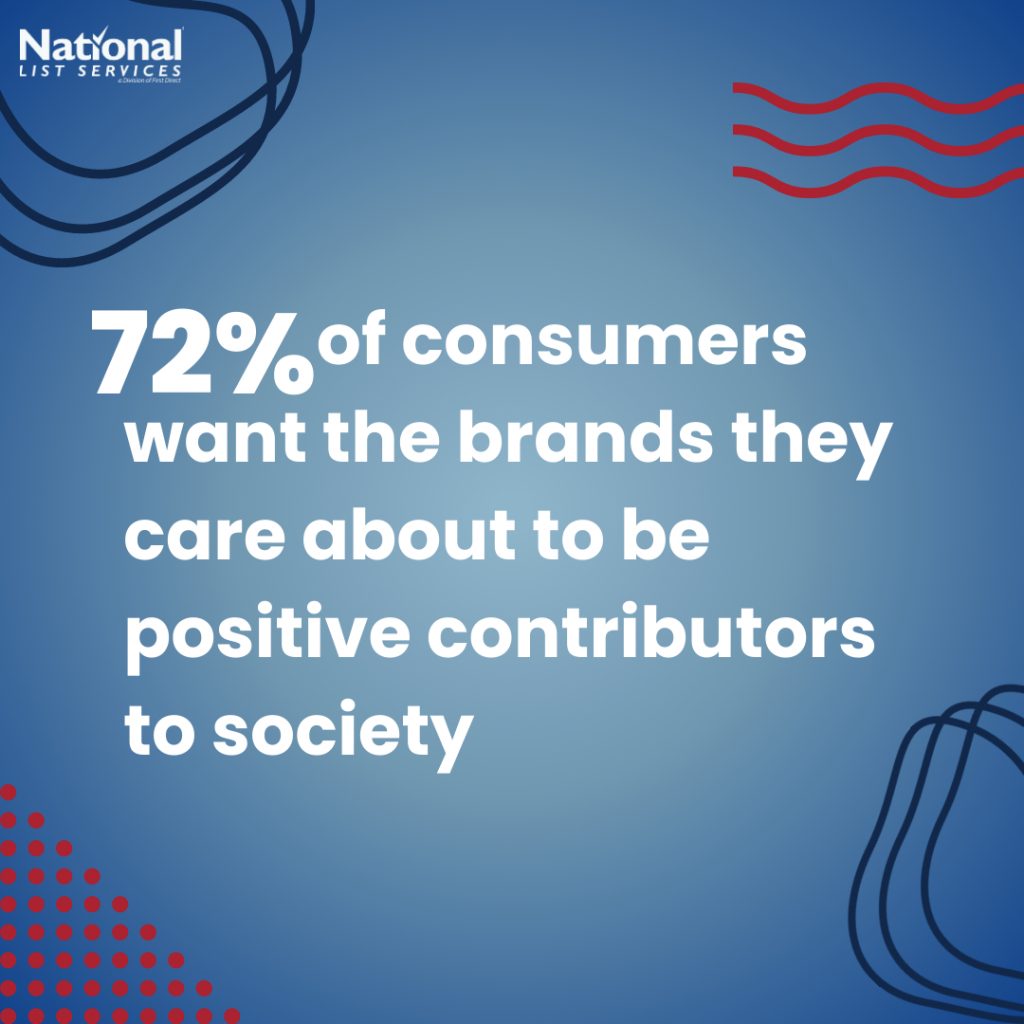
And 49% of young consumers say they will evangelize a brand they feel represents their values, likes, and personality.
Don’t be afraid of incorporating causes you care about into your brands personality! 72% of consumers want the brands they care about to be positive contributors to society. We’ve seen in recent years that many brands (especially smaller companies) connect their core brand to a charity or cause they care about. Younger consumers are 69% more likely to buy from a brand that contributes to a cause.
#2 – Choose Quality Locations
Younger generations are big on authenticity, brand trust, and quality. 74% of 18–24-year-olds believe that brands are responsible for where their ads are shown. Which is true! There’s very little excuse for having your ad show up on a website that doesn’t believe in the same things as you. Programmatic advertising and digital display ads give you a lot of control over your ad placement. Nearly 40% of advertisers have faced some backlash for having ads appear near low quality content. 54% of younger consumers say that ads placed near premium content inspires more trust in the ad itself!
#3 – Use Innovative Technology
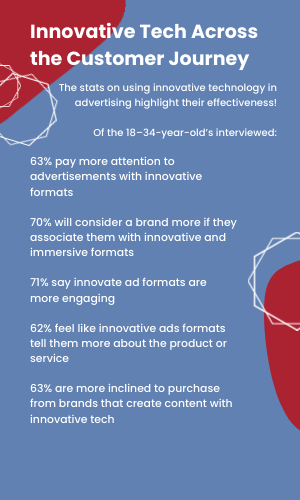
From AI and AR driven content to native and contextual ads, technologically advanced are advertisements are becoming more accessible. The stats on their effectiveness across the entire marketing journey speak for themselves!
Of the 18–34-year-old’s interviewed:
63% pay more attention to advertisements with innovative formats
70% will consider a brand more if they associate them with innovative and immersive formats
71% say innovate ad formats are more engaging
62% feel like innovative ads formats tell them more about the product or service
63% are more inclined to purchase from brands that create content with innovative tech
#4 – Personalization
Personalized ads are effective for every age group. Gen Z’ers and Millennials are less tolerant of ads that aren’t personalized. Most younger consumers have in innate understanding of how their personal data is used to create targeted ads. Being targeted (or retargeted) based on their interests and past activities are expected. Thankfully creating effective personalized ads are easier than ever to make.
- What can you do to create effective personalized ads? Start with the information you have about your customers. It’s difficult to know what your customers want if you don’t know who they are. Look at your 1st party data. What are your most common demographics? What are their interests? How would they most like to be communicated with?
- Use the tools available. Marketing automation platforms and CRMs can do a lot of the heavy lifting when it comes to segmenting data. Many of them are designed to help create simple, personalized messages.
- Have a well thought out plan. Do you have a mapped-out customer journey? Knowing where in their journey your customers are makes a big difference in the types of personalization that will work for them. Think about nurturing. Pay attention to the details. Make sure that there aren’t little annoying things such as, getting an abandoned cart email even though you’ve already come back to purchase it. Get rid of triggers that are connected to repurchasing products commonly only purchased once.
- Know when to walk away. Keep your data clean. If someone has never opened an email it might be a good idea to take them off your list. Their data could skew your demographics and could make understanding what personalization your active customers need difficult.
Is it effective?

Is it effective? Yes! From that survey of consumer between the ages of 18-34, 58% said that a personalized ad helped them make a purchase decision. 42% also said that they had clicked on a sponsored ad in the last 6 months!
In my experience, a lot of companies panic when thinking about marketing to young consumers. They feel like they need to be relatable or “cool.” That often comes off as disingenuous and is easy to see right through. It’s far more effective to instead focus on building a relationship with them. Make it easier for them to see who you are and what you stand for. Chances are they care about the same things you do!
All The Reasons You Need A Buyer Persona

A Buyer Persona or Avatars is one of those confusing marketing things that seems to be really important, but no one ever explains why or how you can make one. Buyer Personas are especially valuable in this digital age where you can’t see your customers. They can help make your digital presence and marketing more personal.
It’s a lot easier to market to one single person than to a crowd. We’ve talked in the past about social media (and email) feels like a personal one-on-one conversation between brand and consumer. Building a buyer persona connects with that thinking. Having a buyer persona helps you to hon in on who you are reaching and who you want to reach.
What are Buyer Personas or Avatars?
In the simplest terms, a buyer persona is exemplification of all of your customers. The most common way to do this is to create a fictional person that has the most common demographics and interests of your customers. What are your customers common denominators? What do they want? What are their pain points? Taking this information and combining it into a person you can picture makes it easier to connect with the crowd. A lot of marketers recommend giving your buyer personas names.
Jim Edwards from Funnel Scripts explains buyer personas as the main character in the story of your company’s customer journey. Although your company already has its own personality, (or brand) in order to success the narrative you’re telling haws to focus on what the customer wants and needs. You are there to help them get to where they want to go. Jim Edwards example buyer persona was for a weight loss company. Their buyer persona is a middle-aged unicorn named Fred who needs to lose weight if he wants to be successful at his quests. Fred is the main character in the story. The weight-loss company is there to help him.
What information do you need to create a buyer persona?
Like any good main character, your buyer persona needs to be well rounded. It needs to have a purpose, interests, goals, and struggles. It’s especially important to know what motivates them so you can help them.

Here’s some common buyer persona attributes.
- What are their basic demographics?
What gender to they identify as? How old are they? Where do they live? What is their relationship status? Are they educated? - What do they do for work?
What’s their job title and description? But more than that, are they a decision maker? What do they influence at work? - What are their interests?
Do they have hobbies or interests? What do they do in their free time? Are they part of a community? - What do they want and why can’t they have?
This a big thing for figuring out what you can do to help them! What are their goals and dreams? What are their pain points? Like, what keeps them up at night? - Why wouldn’t they buy from you?
What’s stopping them from buying from you? What objections may they have? - What ways would they prefer to interact with you?
Do they use social media? Do like a particular social media? Is a phone call the best way to reach them?
Once you have that all that information, you will have a very clear image of who your customer is!
A lot of companies create multiple buyer personas. It is a very good way to segment out different sections of your business. It is also helpful to create a buyer persona for your ideal customer as well! You can take the information you’ve learned about your ideal customer and use it to go and get those customers.
Do you have a buyer persona for your business? And more importantly: what did you name them? 😜
Let’s Talk First Party Data
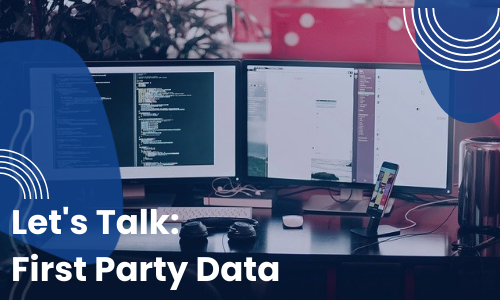
We talk about First Party Data a lot. What it is?
First party data is data that your company has collected directly from your audience which is made up of customers, site visitors, and social media followers. “First party” refers to the party that collected the data firsthand.
First Party Data is collected from the people you have the most to learn from: your current customers! That makes the data as reliable as possible.
How can you collect first party data?
You can attain first party data from your CRM, surveys and subscription-based emails or products. This is also where Google and Social Media Analytics are important.
Google Analytics has a massive list of capabilities and ways to track website data. Using tracking code, Analytics collects information about the way the website was used.
Such as:
- Time of visit
- Pages viewed
- The time spent on each page
- What browser and OS are being used
- Referring site details
- Network location and IP address.
This information can help you see where (and how) traffic is following to and through your website. Google Analytics also has a lot of other tools such as URL Builder that make it easier to track customer data.
Social media analytics are helpful for flushing out the demographics are your most engaged customers. What can you learn about customer from social media? Here’s are some things you can learn:
- What platforms your customers prefer to engage on
- What content do your customers enjoy most
- What type of campaign or advertising works for them?
- Do they have any other hobbies or interests?
- More specific customer demographics, such as age or gender
It’s also super important to connect as many touch points to your customers as possible. The more ways you have to interact with the customer the more likely they are to become a repeat loyal customer. Think about the companies you follow on social media. Have you bought from them? More than once? Are you loyal to them? Do you agree with their mission and goals? Following companies on social media feels like a personal one-on-one connection and generates loyalty.
Organization is Key
The next step of having/using first party data is organization. Having important information about your customers and leads doesn’t do much good if you can’t find it or if it’s connected properly. No matter what size your business is, having a CRM is key. The days of using a Rolodex are long gone. Now there a lot more channels of data to connect to a contact.
For example, in our CRM we keep track of more than just name, company, phone, and email. Our CRM keeps track of what social media we are connected on and any times the contact has engaged with us. We have it set up so that the CRM assigns a number value to actions a contact or lead can take, such as opening emails, clicking links, liking a post, and any orders.
How does all that information benefit us?
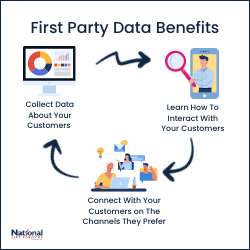
There are many ways! For one, we can use the information we have to target or retarget contacts, leads, and prospects. We can try different channels and types of touches until we find which one they respond best to. Having more than one channel connected to each contact makes multichannel campaigns possible.
The other advantage to First Party Data is that you can collect data and analytics about your customers from the channels you are using to constantly to learn more about your demographics and your customer’s buying habits. The more channels you use the easier it will be to learn about your customer. Then the more customers you have the more information you can learn about your potential target audience. You can use a Look-A-Like to build a list of potentials you can target based on information on your current customers.
What ways do use First Party Data?
Here’s how First Party Data might the key to the future cookie-less world.
Social Media Trends – 2021
Every year, as technology and culture change, social media adapts. Here’s three things that will take the forefront on social media in 2021!
Stories take over….

In the past couple years, one platform after another has adapted a “stories” feature. LinkedIn, Spotify, and Twitter all added stories features in 2020. (Pinterest added one the day this article came out!) Stories allow consumers to see bite sized pieces of content in a way that feels authentic. A lot of marketing automation platforms don’t have stories scheduling built in yet, so it’s a good idea to take some time and plan out your strategy and figure out what way of adding stories to your content will work best for you.
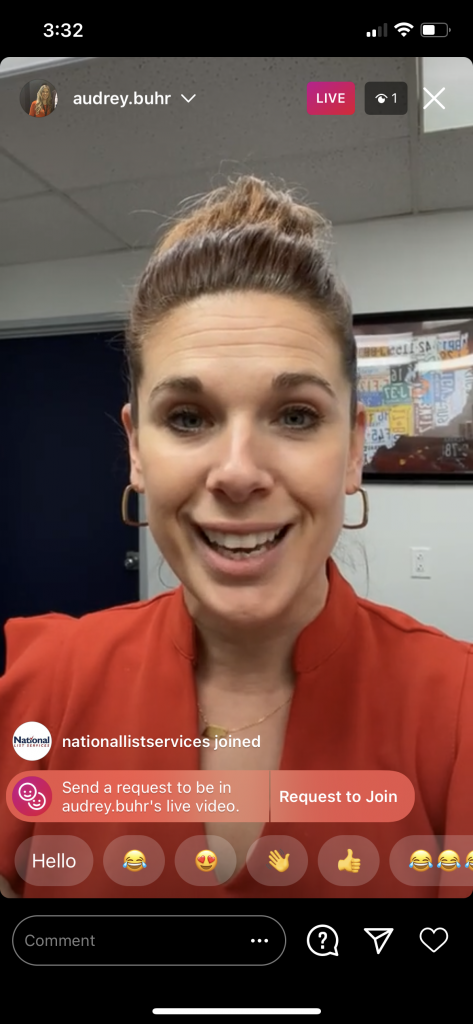
Go Live….
Lives have been popular on just about every platform for years. With the constant increase in content available, have that instant connection with audiences will be even more valuable in 2021.
Purpose driven brands and responsible consumerism….
2020 was defiantly a year for activism and accountability. More and more consumers expect the brands they interact with to uphold their same values. Social Media is the place where you can easily share what your company believes and what you are doing to stand up for your values.
What do you hope to see on social media in 2021?
The 4 Keys To Success In This Environment

We know all the ways things have changed this year. We also know how much trends ,such as relying on digital marketing channels, has sped up. It makes us wonder what we can do to survive and adapt with these changes. Here are four keys to success.
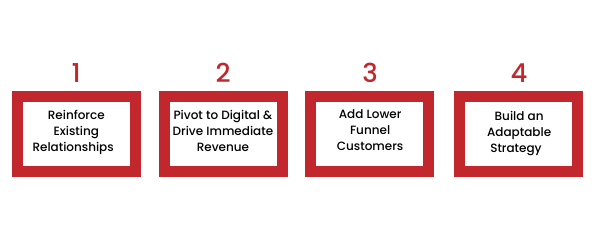
- Reinforce existing relationships. Which means reaching out and keeping in contact with existing and previous customers. Email and social channels are a great way to do this. Having up to date email and other information in your CRM is therefore, critical. Personalizing messages can help you stand out. It’s also important to figure out what channel your customers prefer to buy from you. Compare the current channels to what they preferred before this year to see the direction you should be focusing.
- Pivot to digital and drive immediate revenue. Without money coming in, it’s very hard to build a strategy for the future. Therefore, make sure your team and any tools or tech you need is ready to go.
- Acquire lower funnel customers. A lot of customers now are skipping the “passing interest” phase. They do research, find you, then buy. Making it easy for customers to find you when they are looking is important. Capitalize on lower funnel customers by knowing exactly how they got to you. One way to do that is by utilizing Pixel data. (Want more information on Pixels? Click here.)
- Position for success as this reverts back to “normal.” Have a plan. One thing to think about when building your plan is to create structures with the shifts in buying habits shift in mind. Test and experiment with different types of engagement now to see what channels to focus on on the future.
What do you think the key to successfully navigation the new marketing landscape is?
Can You Use Tracking Pixels On Your Website?

We talk a lot about pixels and pixel data a lot. Pixels, also called tracking pixels or marketing pixels are integral to any marketing strategy. Why?
Pixels are little snippets of code added to a website to create an invisible 1×1 pixel graphic. The pixel graphic captures information about your site’s visitors. Information such as when they visited your website, what type of device and the browser they used, what pages they looked at and how long they stayed on each page. Unlike cookies, pixels do not rely on browsers and instead send the information they’ve collected directly to servers. They cannot be disabled in the same way as cookies and can follow visitors across devices.
There are two main types of pixels: retargeting pixels and conversion pixels. They serve different but equally valuable purposes. If you have ever seen an ad on social media after just Googling the brand, then you’ve encountered a retargeting pixel. Retargeting pixels track website behavior then put an ad for a relevant product in the path of the user. They offer instant results because of the lack of downtime between your website and the ad. Unlike retargeting pixels, conversion pixels are usually triggered after or during a purchase. They track the path to the purchase and can connect revenue to specific ads. This helps to see what ads are working.
Why do you need a pixel? They provide insight into audiences, user behavior, and ad campaigns. The data provide can be crucial to putting the right ad in front of the right consumer at the right time. As well providing valuable analytics for campaigns.
Pixels are easy to install and use. And can be used across many different platforms.
With so many benefits, it’s easy to see why so many marketers rely on pixels and their data.
Want help setting up a pixel for your site? We can help. Get in touch here.
Customer Identity in the New Normal

We all acknowledge this this year has created a new normal in marketing. (and everything.) We have learned to be adaptable and prepare for the unexpected. Digital is king and therefore, data is more important than ever. However, we also know that Google is phasing out 3rd party cookies and that iOS 14 allows users to opt out of their IDFA (identifier for advertisers.) It’s a perfect storm of conflicting advertising trends. How do follow our audiences online without being able to identify them?
So, what information do we actually need about our customers? We be able to connect our first party data to the many different advertising personas and IDs that are going to replace cookies. We also need to be able to link personas across different channels. For example, we need to know that the “John” who is currently on our website is the same “John” who is in our CRM, and not another member of “John’s” household. Being able to identify known customers will be crucial to retargeting and analytics.
In order to accomplish this, you are going to need a robust CRM to manger all your first party data. You will also need data provider that is creative and understands how to apply the data.
Pixel data is going to be even more important in identifying customers that are on your website.
Getting consent from customers to use their data is also important, because as soon as someone starts to interact with your brand you should begin to build their profile. We still have over a year before Google starts to phase out cookies, so now is the time to prepare and gather as much 1st party data as possible!
